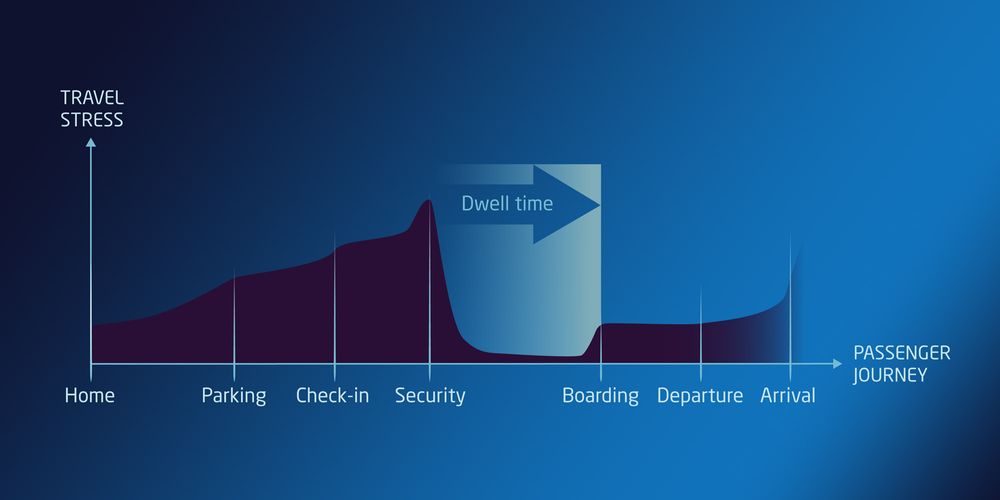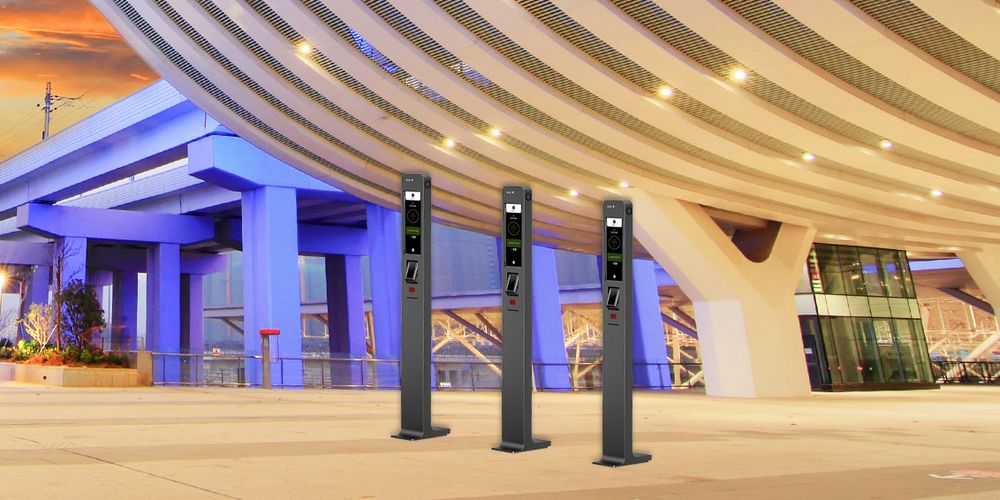Cookie settings

Big Journeys Start With Compact Kiosks
Airport self-service technologies help improve passenger satisfaction and airport revenues, but a one-size solution does not always fit all. In terminals where size really does matter, we look at one of the slimmest self-service kiosks on the market and the opportunities it can provide.
Airports these days are big business. They are not just hubs built for effective people movement, but are myriads of entertainment, full of high-end shopping outlets, restaurants and leisure experiences. In fact, around half the revenue for airports comes from non-traffic and non-operational services, such as advertising, sponsored zones and retail spaces.
When every square inch is a potential money maker, airports are deeply versed in how, when and where they can make money during the passengers’ journey. Besides the obvious aeronautical revenues such as airline landing fees and terminal rental, airports know that satisfying travelers is a sure-fire way to improve the bottom line. Even a 1% increase in passenger satisfaction will generate an average growth of 1.5% in non-aeronautical revenue.
But how can airports maximize their revenues while ensuring a seamless passenger experience? It’s a balance between smart technology and human psychology.
The Economy of Space
Managing passenger anxiety inside the terminal is an important step towards improving the traveler experience. It is well known that the check-in and security processes evoke the highest levels of stress during the passenger’s journey, but adding more staff and large service desks to tackle this problem is not necessarily good for business.
When space, velocity and passenger expectation are considered key contributors to success, self-service technologies for check-in, bag-drop and biometric scanning are obvious solutions. They can help to minimize passenger stress by reducing check-in time by up to 40% and also expediate passenger flow towards the terminal airside, where psychologically passengers become more relaxed - and more likely to spend.

Stress levels during the passenger journey.
But for airports that want to create their own process flows using a unique mix of hardware and software systems, what is the best solution to choose? By way of speed, accuracy and design - we think the Ink Totem kiosk is an excellent choice.
Packed with potential, the super thin and sleek Ink Totem kiosk is designed to support customer self-service in a number of settings and applications in the airport and beyond. Boarding with biometrics or a mobile phone scan couldn't be any easier - just look at the Ink Totem without stopping and it instantly gives a boarding result. The slim and stylish design takes only a fraction of the space of a traditional kiosk too, making it simple to fit into any environment and creating more space for the things that matter most – the passengers.
The Slim and Stylish Self-service Kiosk
The Ink Totem is the latest product produced by Ink Innovation, a company that has been developing smarter airport solutions for 11 years. They currently have hardware installations in more than 10 airports across the globe and run software systems in over 100 airports. In their latest venture to develop one of the most space-saving airport kiosks in the world, Ink came up with the design by putting the customer’s satisfaction at the forefront.
Yurik Schwab, Head of Hardware Systems at Ink Innovation, explained “We wanted to design a multi-purpose kiosk that would help businesses to maximize their space. At the same time, we wanted to build in flexible self-service capabilities to empower staff to spend more time focusing on delivering a superior customer experience.”
He adds, “We care deeply about the difference our products make to passengers’ journeys to and through airports - and this is evident in the results of Ink Totem.”

Think Inside the (Tiny) Box
While the end goal was clear, finding components during the manufacturing process was a challenge. No off-the-shelf interactive screen on the market would fit the small dimensions (or budget) of the compact unit that Ink Innovation envisioned.
On a search for a custom solution, Ink discovered Neonode’s Touch Sensor Modules which are available in custom lengths. The sensor modules offered exceptional speed and accuracy and could be seamlessly integrated into the small display screen embedded in the Ink Totem. Configuration of the touch area could be completely customized so adjusting the application interface for bespoke airport needs was made possible – keeping it flexible for multiple uses at check-in, security or boarding. Ink also proclaimed that the added bonus was that the touch sensor modules could also make interaction with the screen completely touchless. Users could operate the screen by simply hovering their fingers above the screen without the need to touch it – which added value in terms of cleanliness and user experience.
“We found Neonode to be outstanding in terms of both commercial and technical support,” said Yurik. "All the documentation was clear, up-to-date and easy to find. When we did have questions, Neonode was always helpful and quick to respond.”
The sensor modules could be applied in any direction, which meant that Ink’s engineers could use it in on a small standard screen, which they installed vertically to fit the kiosk design. Since they needed just one sensor module per unit, the Neonode solution was a perfect fit in terms of size, cost and function.
“Our mission is to help our partners bring their visions to life,” said Bastien Beauvois, Director Sales EMEA at Neonode. “We were happy to support Ink Innovation’s creative and pragmatic application of Neonode’s contactless touch technology and we look forward to further collaborations in the future.”
Beyond the Gate
Beyond the boarding gates, Ink Totem creates possibilities for self-service applications across the entire airport. One promising application is to use Ink Totem with the addition of a card reader as a self-service POS terminal in retail spaces – bringing a modern touch to dwell time shopping and dining.
Ink Totem can also be used with facial recognition to grant access to airline lounges or any controlled area, making it effortless for ground crew, airline staff and passengers to verify their identities for smooth and safe movement through the airport. For added security, Ink Totem can also be equipped with finger vein biometrics technology, which identifies a person by the unique pattern of the vein in their finger — something that’s nearly impossible to fake.
And let us not to forget the arrival – another part of the traveler’s journey that tops the list of anxiety provoking processes. Ink Totem could be used give passengers the control over their ongoing journeys when booking hotels, arranging holiday excursions, renting a car or ordering a taxi.
Learn More
Ink Innovation is a provider of a unique ecosystem of blockchain, biometrics, mobile and cloud systems for the travel industry and other organizations to improve operational flow and transform passengers’ experiences and journeys worldwide. Learn more at innovation.ink
About Yurik
Yurik Schwab, in his role as the Head of Hardware Systems at Ink Innovation, is responsible for delivering the best quality and performance of Ink hardware products. Yurik has a proven track record of managing projects and engineering teams from concept through product introduction. He is experienced in the logistics and transportation, airlines’ ground operations, tour operators and hotel industries, mainly focused on managing operations and ground services. Before joining Ink, he worked for several airlines and handling companies, where he helped to develop services and operations across different departments. Over that time he strengthened his background in project analysis, IT systems analysis and development, as well as built his leadership and management skills.
